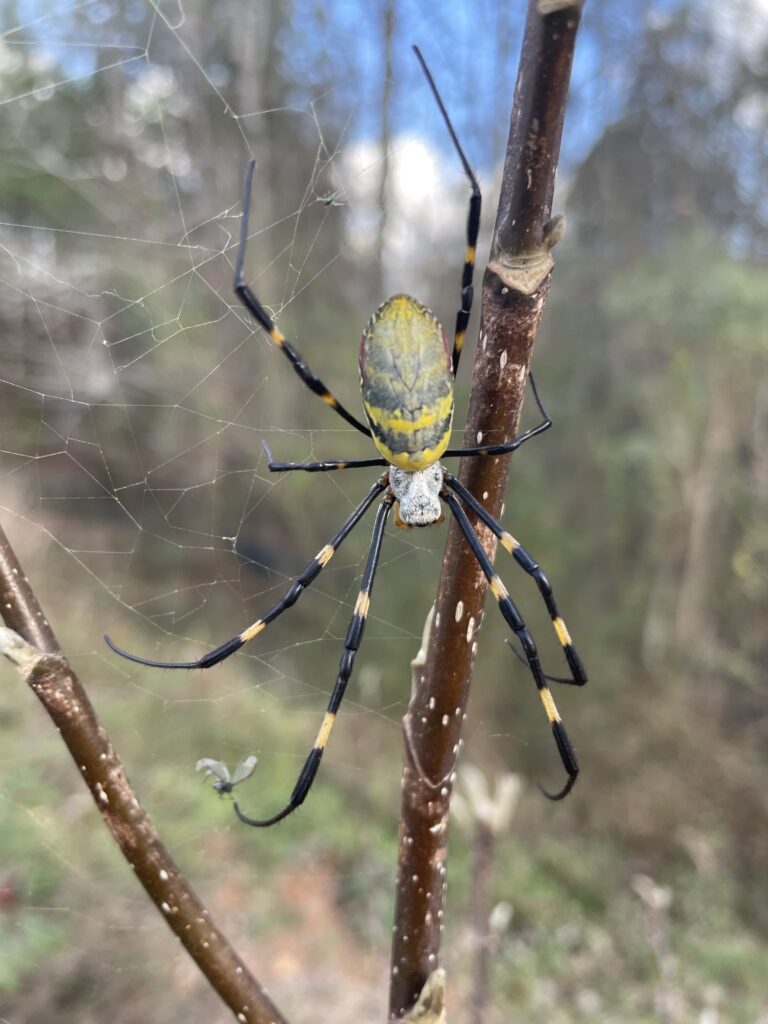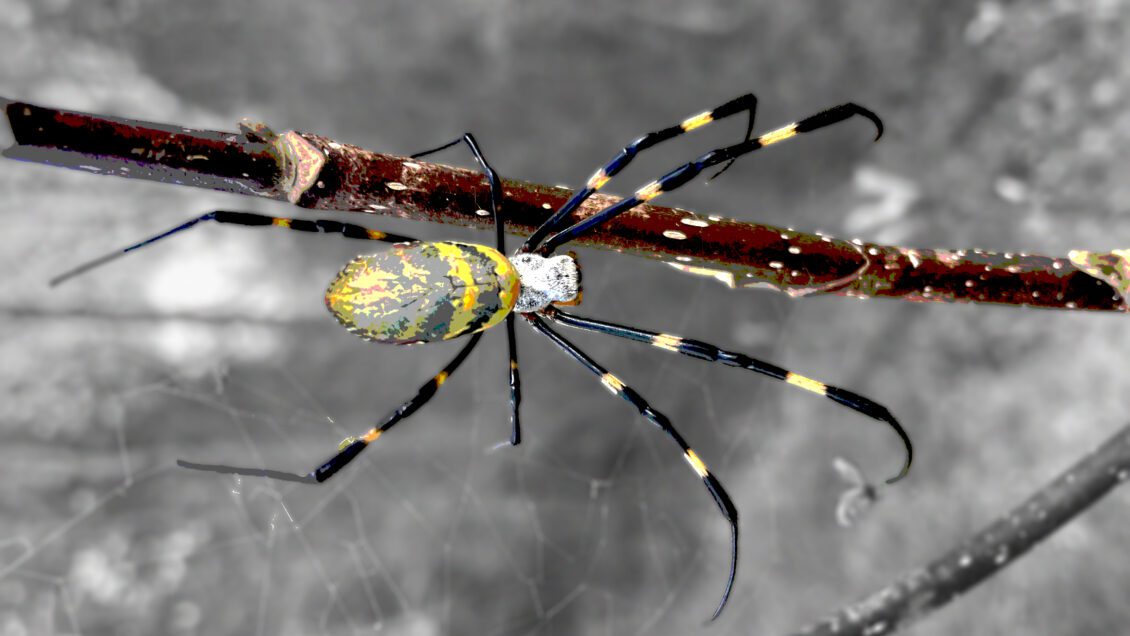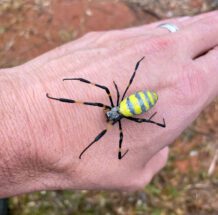Only 3 years ago, David Coyle first spotted what he believed was a Joro spider in his backyard. After quickly confirming the species, he did what any inquiring mind might: began collecting data.
“I walked the edge of the woods — and they were everywhere,” Coyle recalls. “I have a 94-yard perimeter and found 50 Joro spiders on the perimeter. So, basically, every two yards there was a spider. This was in the morning and all the webs had dew on them, so you could easily see them, and there were just dozens of them on the power lines across the road.”
But as a scientist and assistant professor in the Department of Forestry and Environmental Conservation at Clemson University, Coyle needed much harder evidence than that initial observation to assess how pervasive the Joro — a large yellow spider with a yellow and gray abdomen — had, and could, become.
In a new peer-reviewed study, Coyle and his collaborators shared the results of their evidence-gathering with one big takeaway: “These things are here to stay,” Coyle said.
And not only that; they are spreading like wildfire.
The study used advanced modeling techniques, based on 20 separate variables, to assess the Joro’s native range and then applied those variables to the entire United States to attempt to quantify habitability elsewhere.
“Those data show that this spider is going to be able to inhabit most of the eastern U.S.,” Coyle said. “It shows that their comfort area in their native range matches up very well with much of North America.
Barring some unforeseen circumstance, we expect the range of these things to continue expanding, likely to the north, and we’ve already seen that with some populations in Maryland.
DAVID COYLE, CLEMSON UNIVERSITY ASSISTANT PROFESSOR
Southern Adventist University Professor David Nelsen, who led the research alongside Coyle, pointed to another major takeaway: The study shows native species are negatively affected by Joros, meaning more research is needed to ascertain why — and what can be done about it.
And if the conclusion that a large area of the eastern United States may be habitable to Joros is true, Nelsen said, it may present a major challenge for native species and further stress already fragile ecosystems.
“Because of how far Joros have already spread and how fast they continue to spread, collaboration is vital for a project like this to succeed. Both collaboration across institutes and with local communities. I consider it one of our greatest successes that we have been able to assemble a team spread across the southern United States and partner with several non-academic groups and individuals,” Nelsen said.
While Coyle didn’t see a Joro with his own eyes until 2020, the non-native species was first found in northern Georgia in 2014. Known to scientists as Trichonephila clavata, the Joro is present in the Upstate and parts of the Midlands in South Carolina.
As of October 2022, T. clavata’s range spans at least 120,000 square kilometers, occurring across Georgia, South Carolina, North Carolina and Tennessee, with reports in Alabama, Maryland, Oklahoma and West Virginia.
The Joro spider’s pattern of spread suggests it is primarily driven by natural dispersal mechanisms, such as ballooning, a process by which spiders move through the air by releasing gossamer threads to catch the wind and go airborne, at the mercy of air currents and electric fields, although human-mediated transport cannot be discounted.
As for small-scale pest control at home, while Coyle said any standard control method would be effective, he also noted it’s likely unnecessary.
“Pesticides work, but, also, they are probably overkill because it will kill everything else, and there is a cost involved; it’s just as easily to physically move them if they are on your house. They seem to love structures. So, I just tell people to take a stick or broom and remove them,” Coyle said.
Like other large-bodied orb-weavers, Joros capture and feed on flying insects and potentially other small animals, and since they are spreading across both natural and urban habitats, management options are limited.

So, though they appear to be here to stay, Coyle said the good news is Joros do not want to go inside your home, but instead will make a web on the outside of the house or other structure.
That brings about the obvious question: if Joro spiders aren’t harmful to people or animals, and don’t want to come inside your house, are they bad? Some initial opinions upon their arrival suggested the species was beneficial because it eats brown marmorated stink bugs and other nuisance species.
The actual answer, Coyle said, is much more nuanced.
“These spiders don’t seem to care what gets in their web; they’re just as likely to eat brown marmorated stink bugs as they are to eat a Monarch butterfly. To say they’re more beneficial than another spider is just simply wrong — they’re a spider — and if something gets caught in their web, it’s going to get eaten. And they don’t care if it’s a rare native pollinator and there are only a few of them left in the world or if it’s a brown marmorated stink bug,” he said. “It’s six of one or half-dozen of another — it’s the same thing to that spider — it’s prey.”
But though the exact mechanisms of their spread are still being studied, one pattern is quite clear: Where you have an abundance of Joro spiders, you don’t find others.
That means Joros are indisputably displacing native species and having other negative impacts.
“These are not just benign spiders coming to catch and kill bad things; these are pushing out native species and catching and killing whatever happens to get in their webs,” Coyle said. “Are they bad or good? It’s very nuanced depending on your perspective.”
Get in touch and we will connect you with the author or another expert.
Or email us at news@clemson.edu


